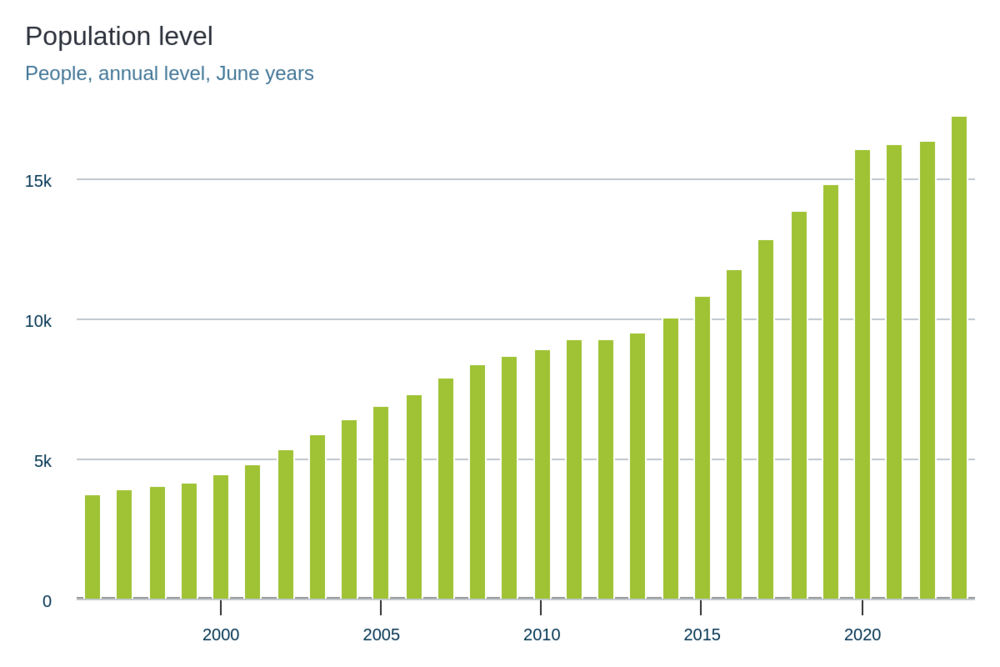Predicting population growth: an uncertain task
Tony O'Regan
12 May 2024, 5:08 PM
 The Wānaka Ward population was 18,046 at the end of 2023 PHOTO: Wānaka App
The Wānaka Ward population was 18,046 at the end of 2023 PHOTO: Wānaka AppThe Upper Clutha is growing at a rapid rate, with new developments in Three Parks, Northlake, Luggate, Cardrona and Longview - to name just a few - providing ample evidence of a surge in commercial and residential growth.
According to Infometrics the Wānaka Ward has grown at an average 6.1 percent per annum for the past 23 years, from a population of 4,460 in June 2000 to 17,290 in June 2023. This period included the global financial crisis and the Covid-19 pandemic.
During the same period the New Zealand population increased at an annual rate of just 1.36 percent.
Concerns have been raised that population growth projections used by Queenstown Lakes District Council (QLDC) and others may not be up to the task.
In an opinion piece published in the Wānaka App in March, former Wānaka Business Chamber chair and former Wānaka Primary School board chair Andrew Howard voiced concern that population growth projections may not be adequate to ensure sufficient infrastructure for the community in the future.

Wānaka Ward population growth in real terms for the past 27 years. DATA: Infometrics
The Wānaka App took a close look at the recently published new population projections from Stats NZ which are used by QLDC to underpin infrastructure planning, asking experts whether they were a good approach.
A council spokesperson told the Wānaka App the QLDC’s planning growth rate replicates the Stats NZ High Growth scenario and it was chosen as it balances the funding risk of over-projecting with the planning and infrastructure risks of under-projecting.
That projection indicates a resident population in the Wānaka Ward of 18,046 at the end of 2023 and forecasts 4.4 percent annualised growth for the next 10 years and 3.5 percent annualised growth across the next 30 years.

Stats NZ high growth population forecasts are being used by QLDC. DATA: QLDC
University of Waikato Professor of Economics Michael P. Cameron told the Wānaka App that councils update the projections they use on a regular basis.
“This might be as Stats NZ releases new projections, or more likely happens each time the council has to go through the Long Term Plan (LTP) process,” Michael said.
“It is critical to have good population projections, to ensure appropriate planning is undertaken. However, it is also important to recognise that projections are never 100 percent accurate.
“There is a great deal of uncertainty involved, and that uncertainty increases the further forward in time you look.”
Michael said relying on projections that are too high can have consequences that are just as bad as relying on projections that are too low.
“Having too much infrastructure and amenities in place for a smaller than expected population sounds good in theory, but ratepayers need to pay for that,” he said.
“So, projecting a higher population will come with higher costs in the form of higher rates. There is no panacea in simply projecting a higher population.”
Michael said looking back at the past 20 years and projecting that growth rate forward is likely to overstate the future population.
“Almost no place, ever, has experienced such growth. Even though the population may continue to grow in absolute numbers, the percentage growth tends to decline. So, I expect that … numbers based on six percent growth for 30 years probably significantly overstate the future population.”
Stats NZ agrees that growth rates are likely to slow over time.
In a statement to the Wānaka App it said there are two key reasons why projected population growth rates may be lower than the most recently observed growth rates.
“Firstly, migration has been very high in many areas over the past decade and the projections assume that international migration, at least, will not continue at record levels,” the statement said.
“Secondly, population growth from natural increase (births less deaths), is projected to decline as our population ages. These trends are not unique to Wānaka.”
It looks like only time - and Wānaka’s future community - will tell whether QLDC’s decision to use the Stats NZ High Growth scenario is the right approach.




